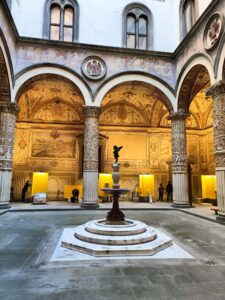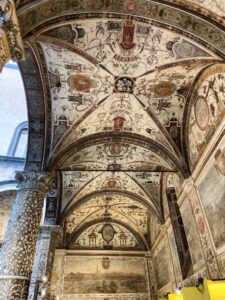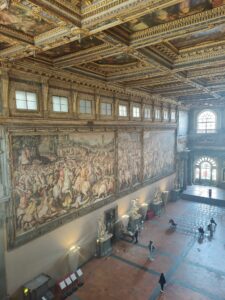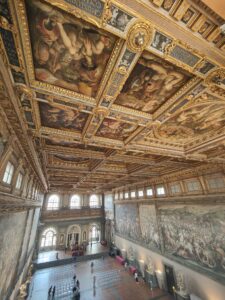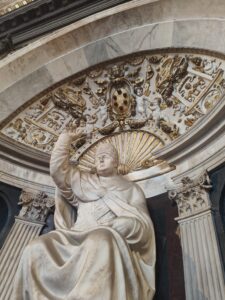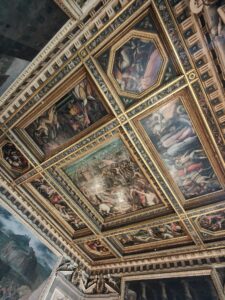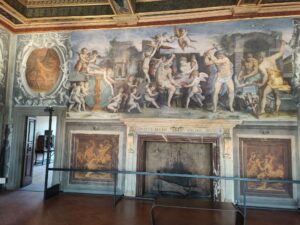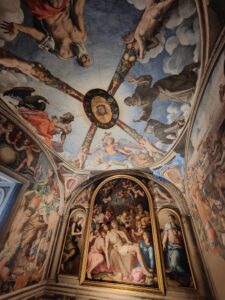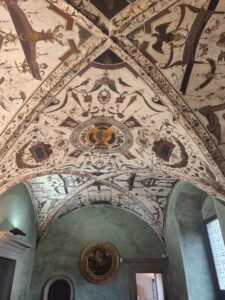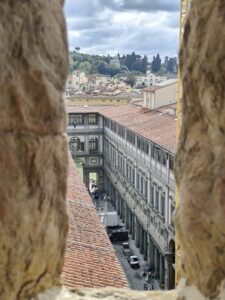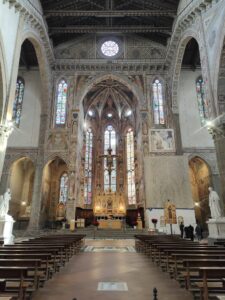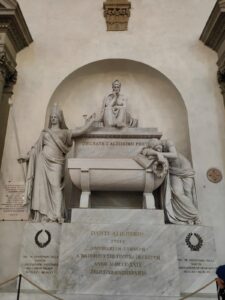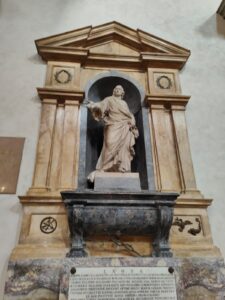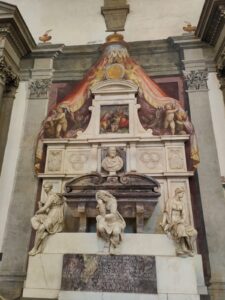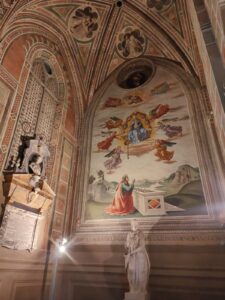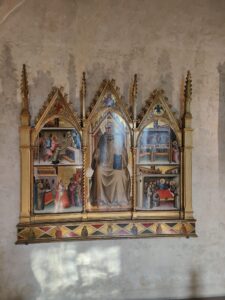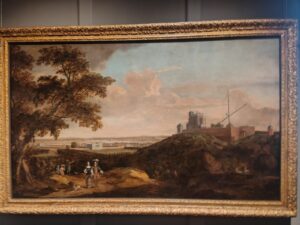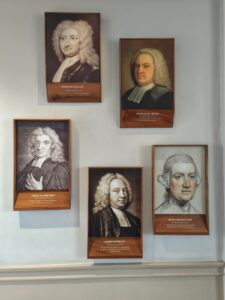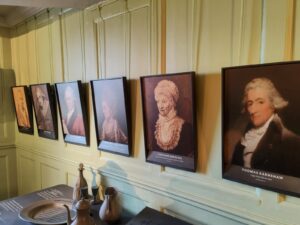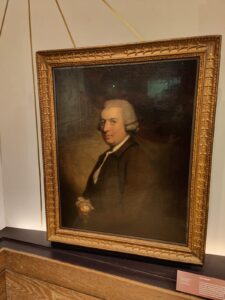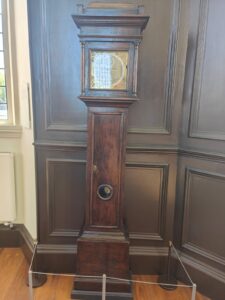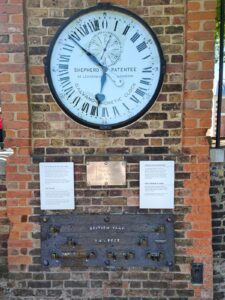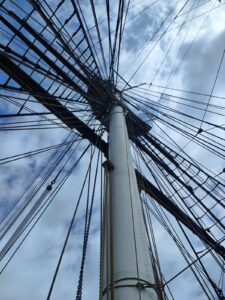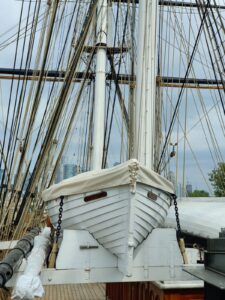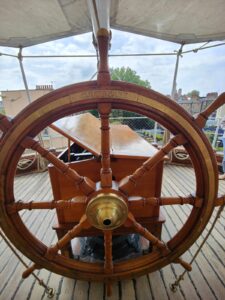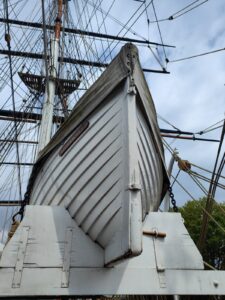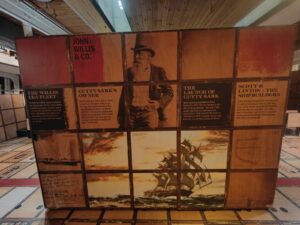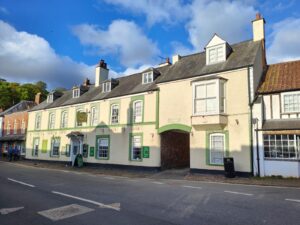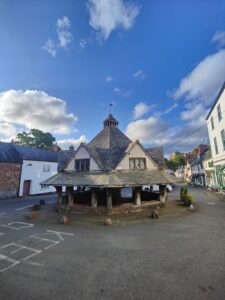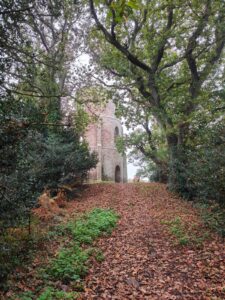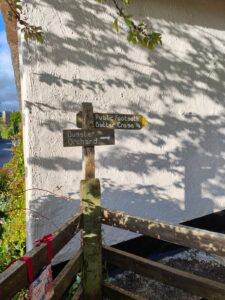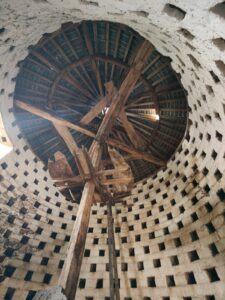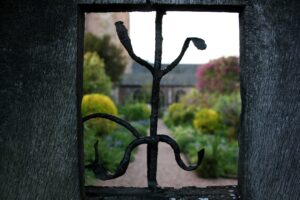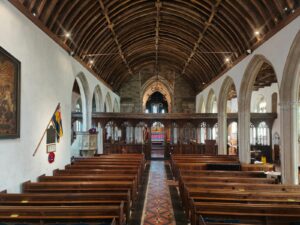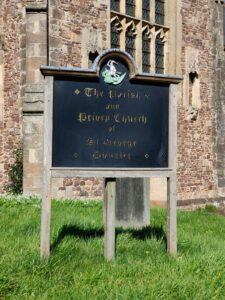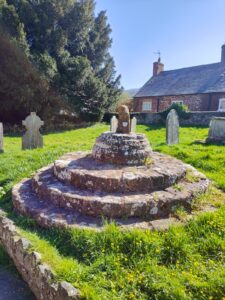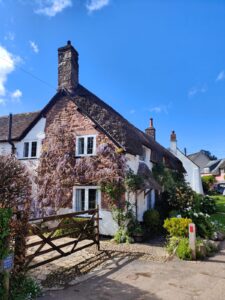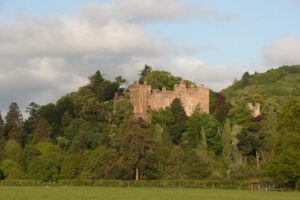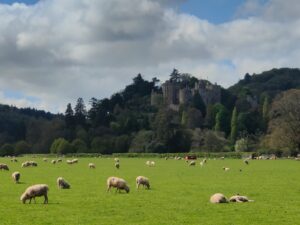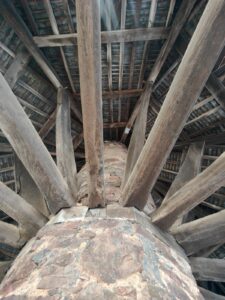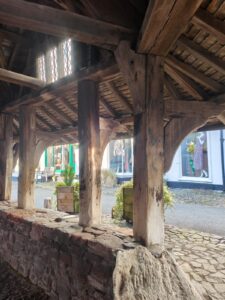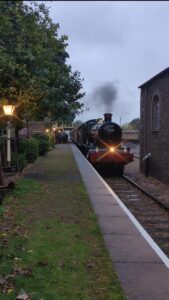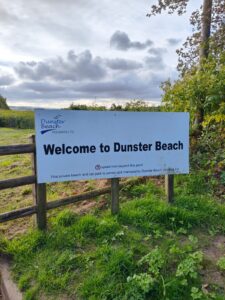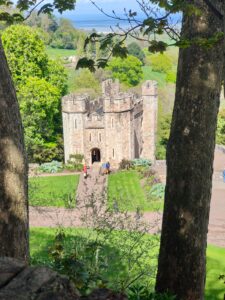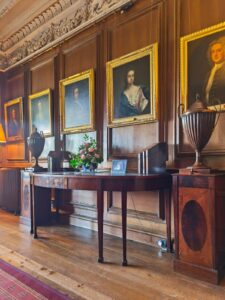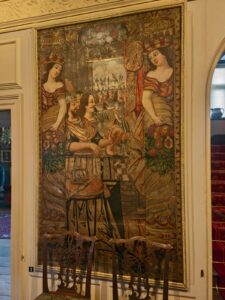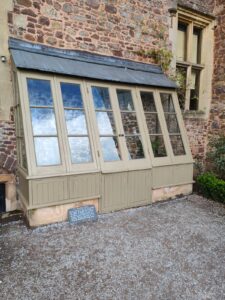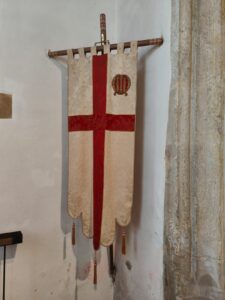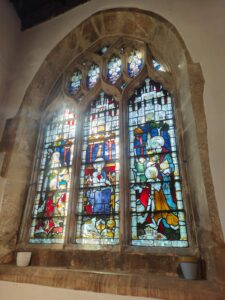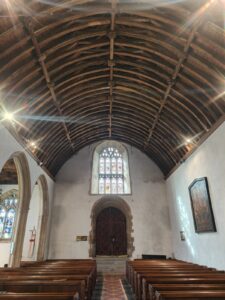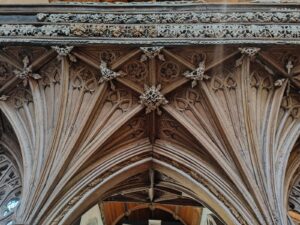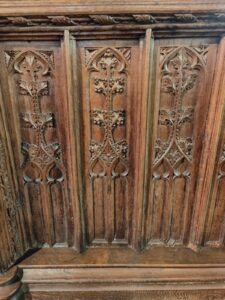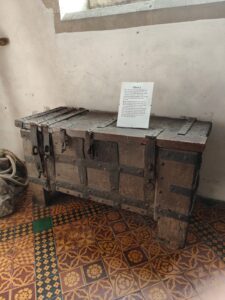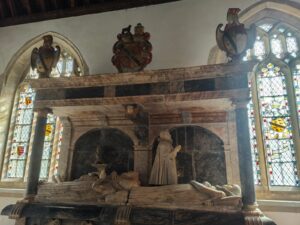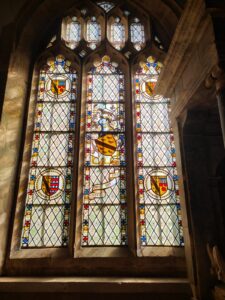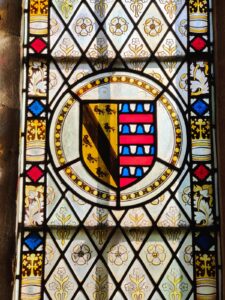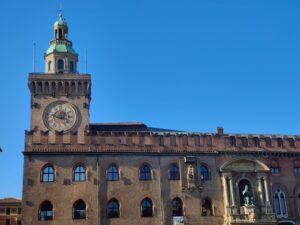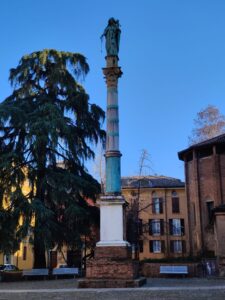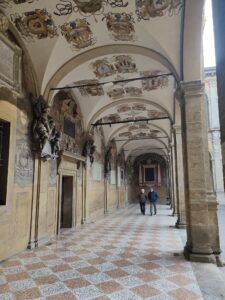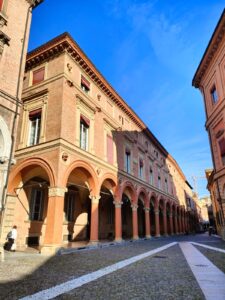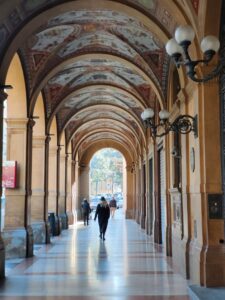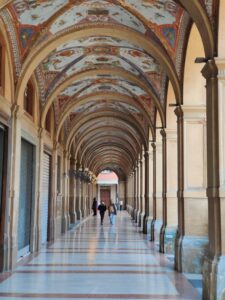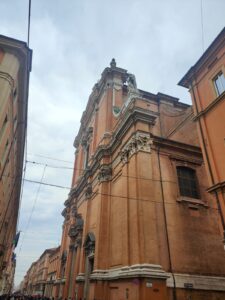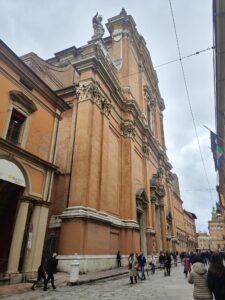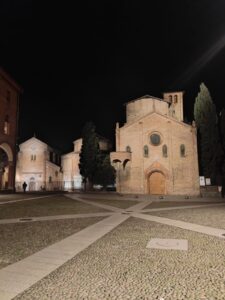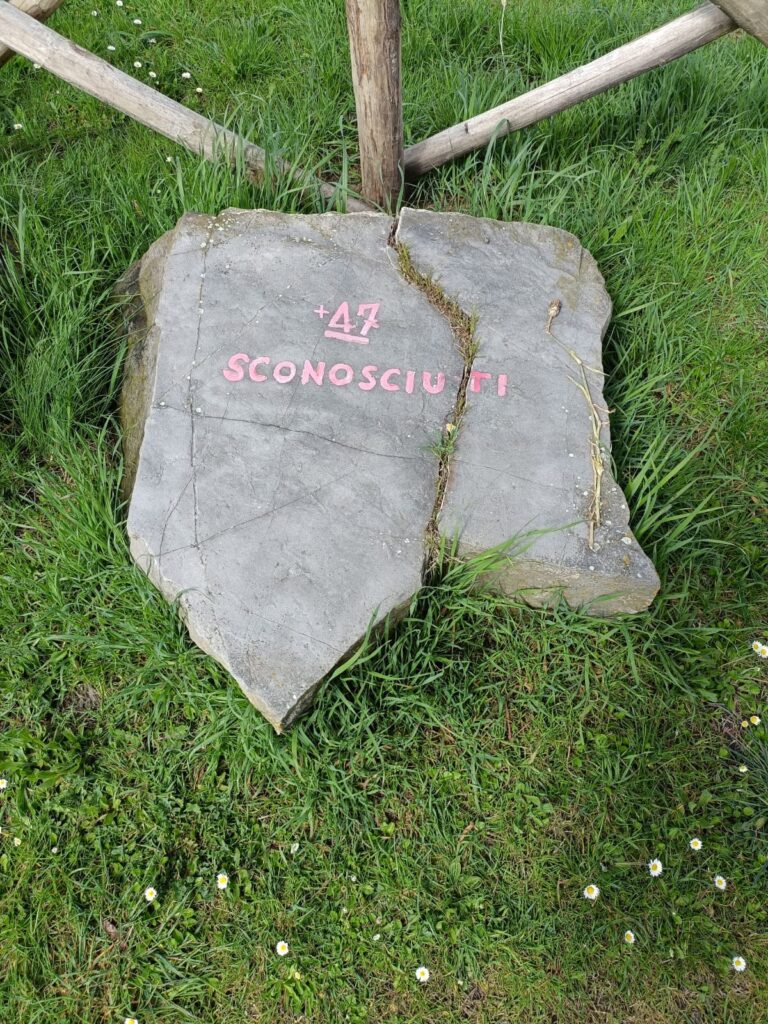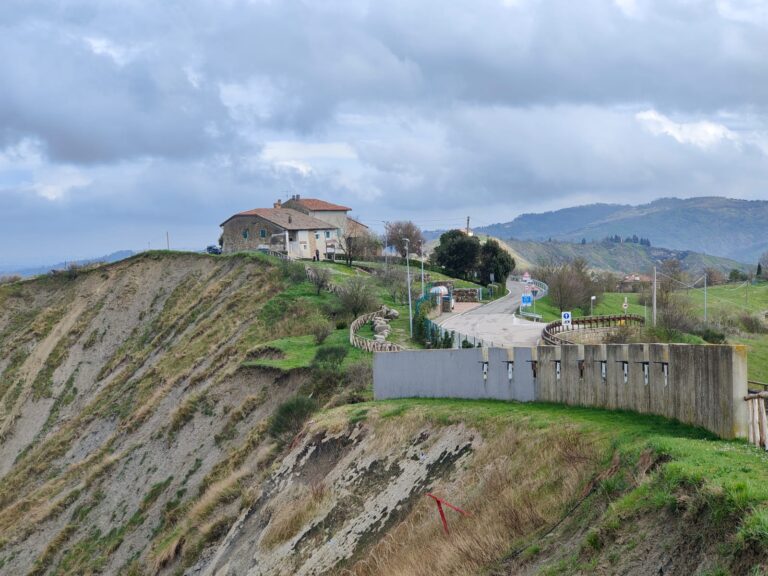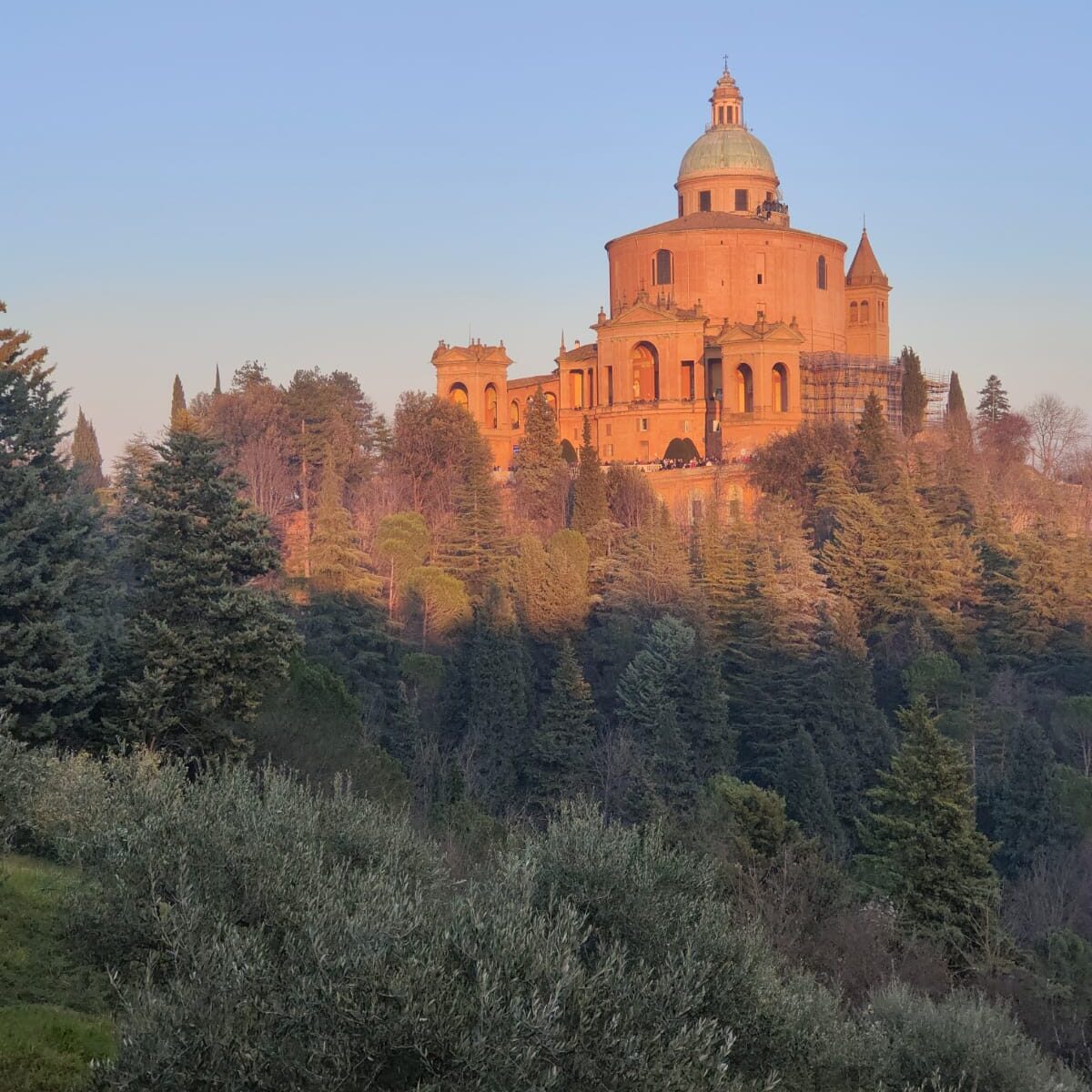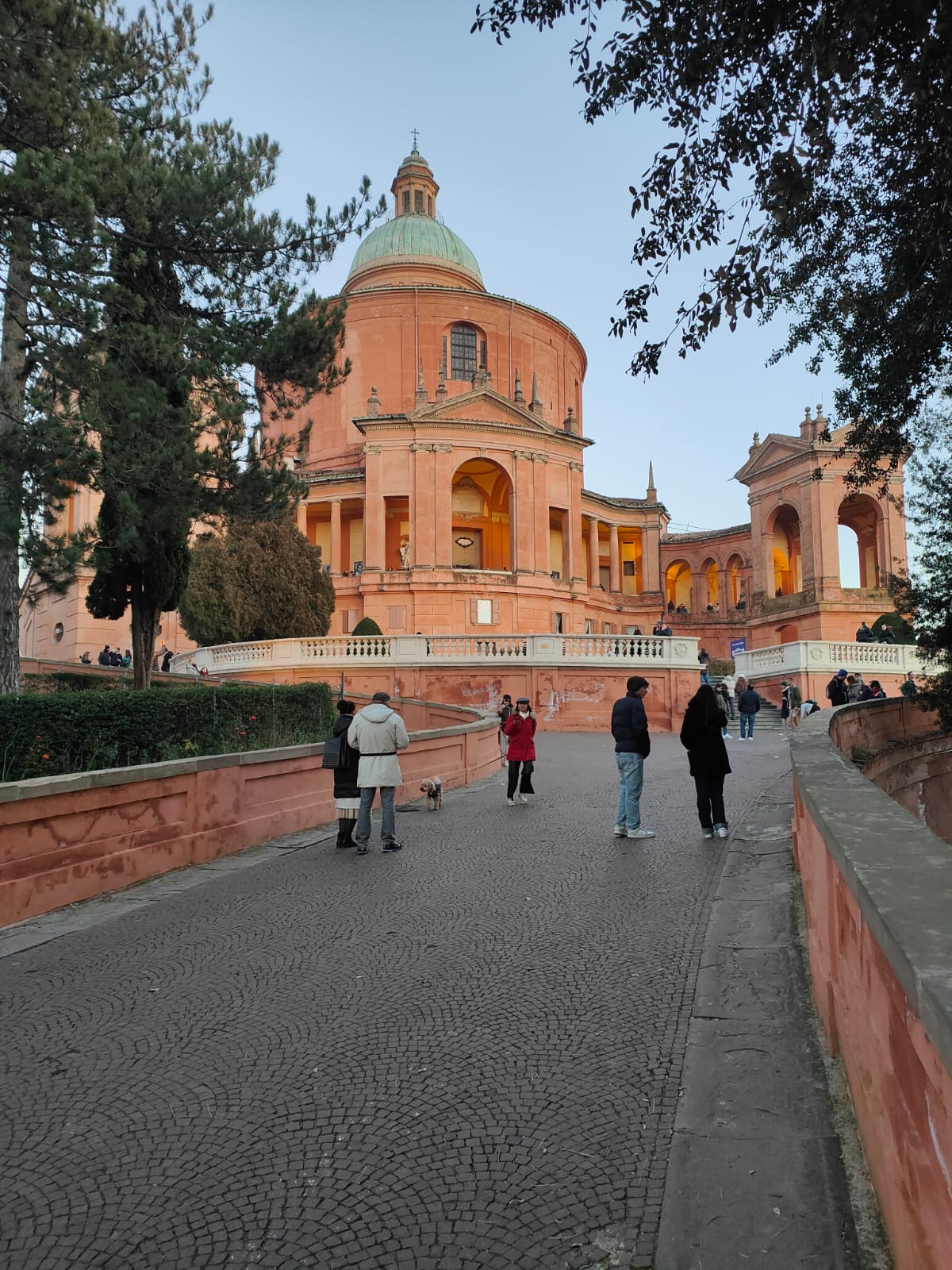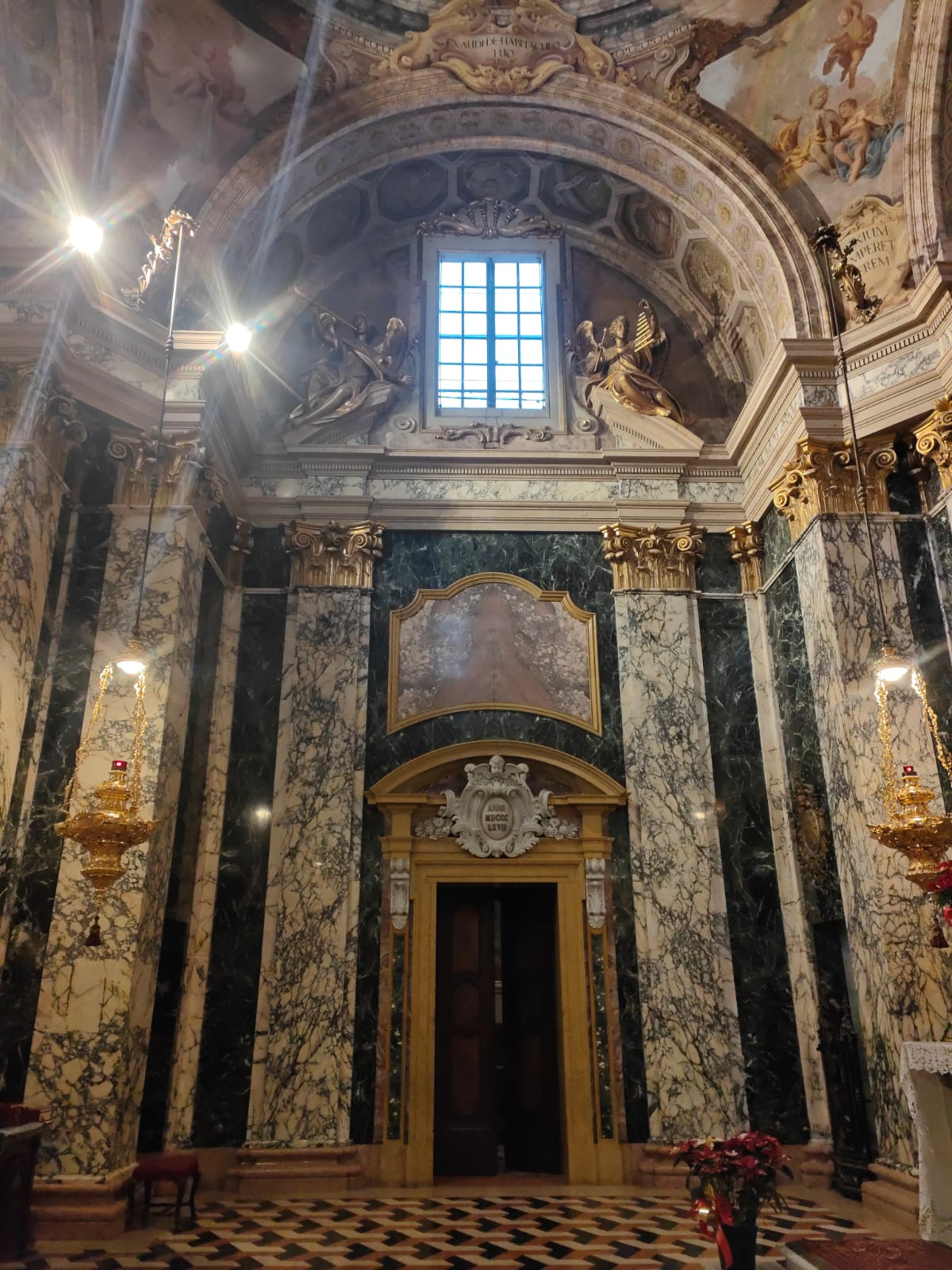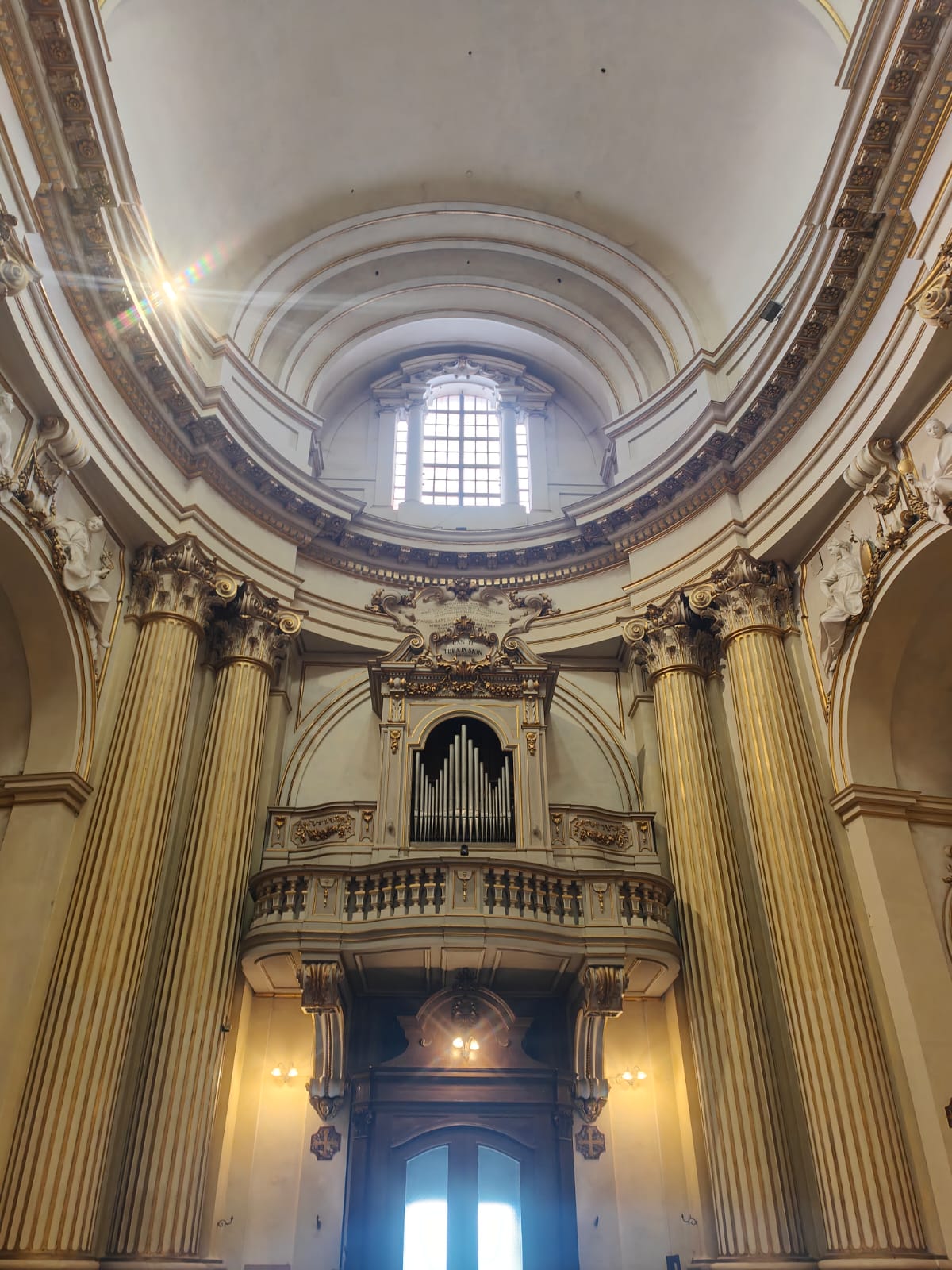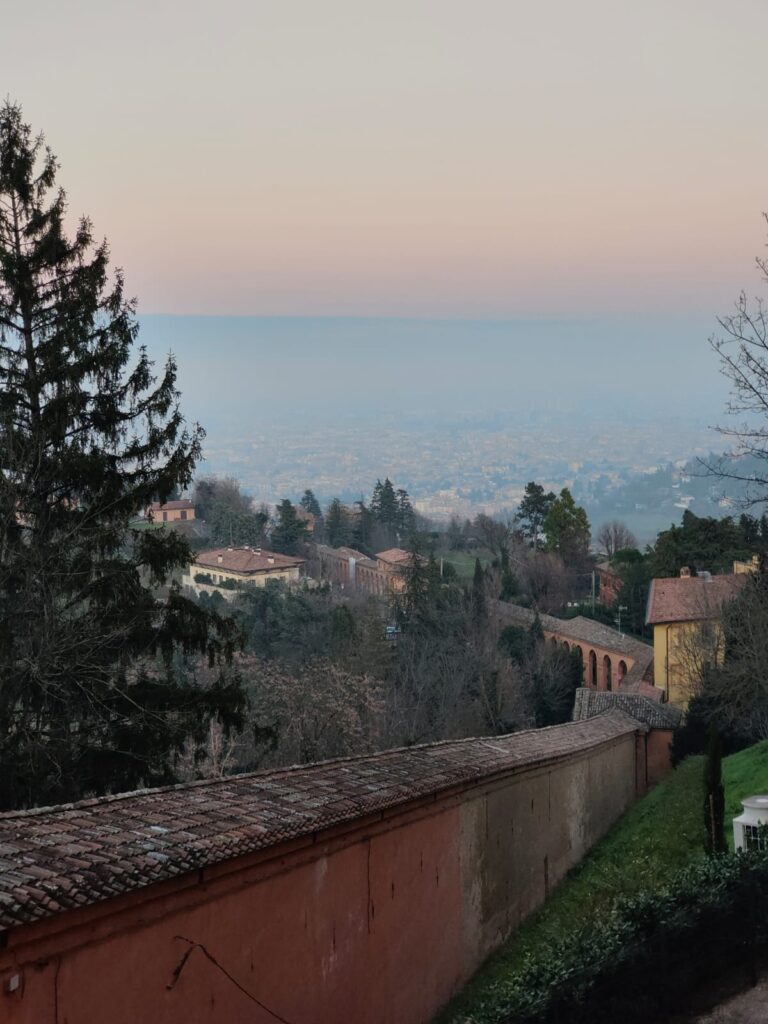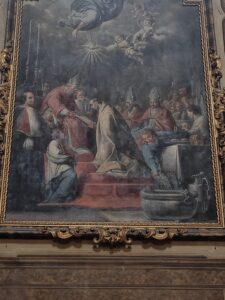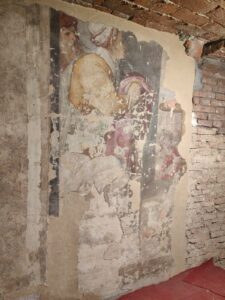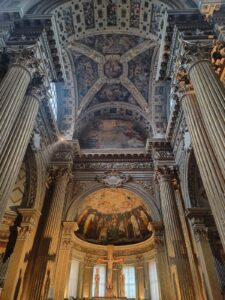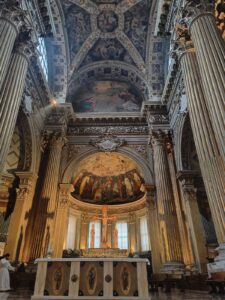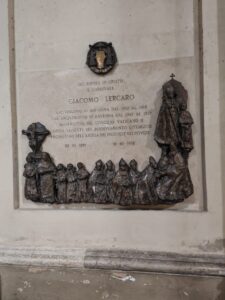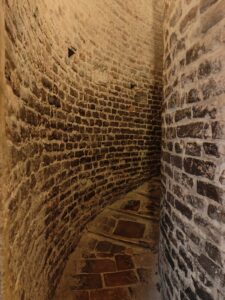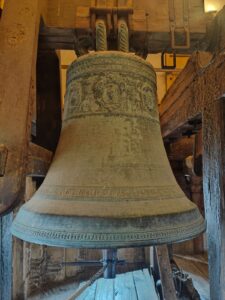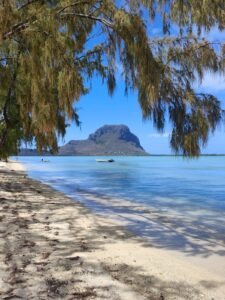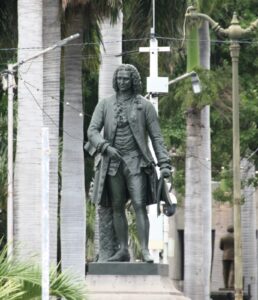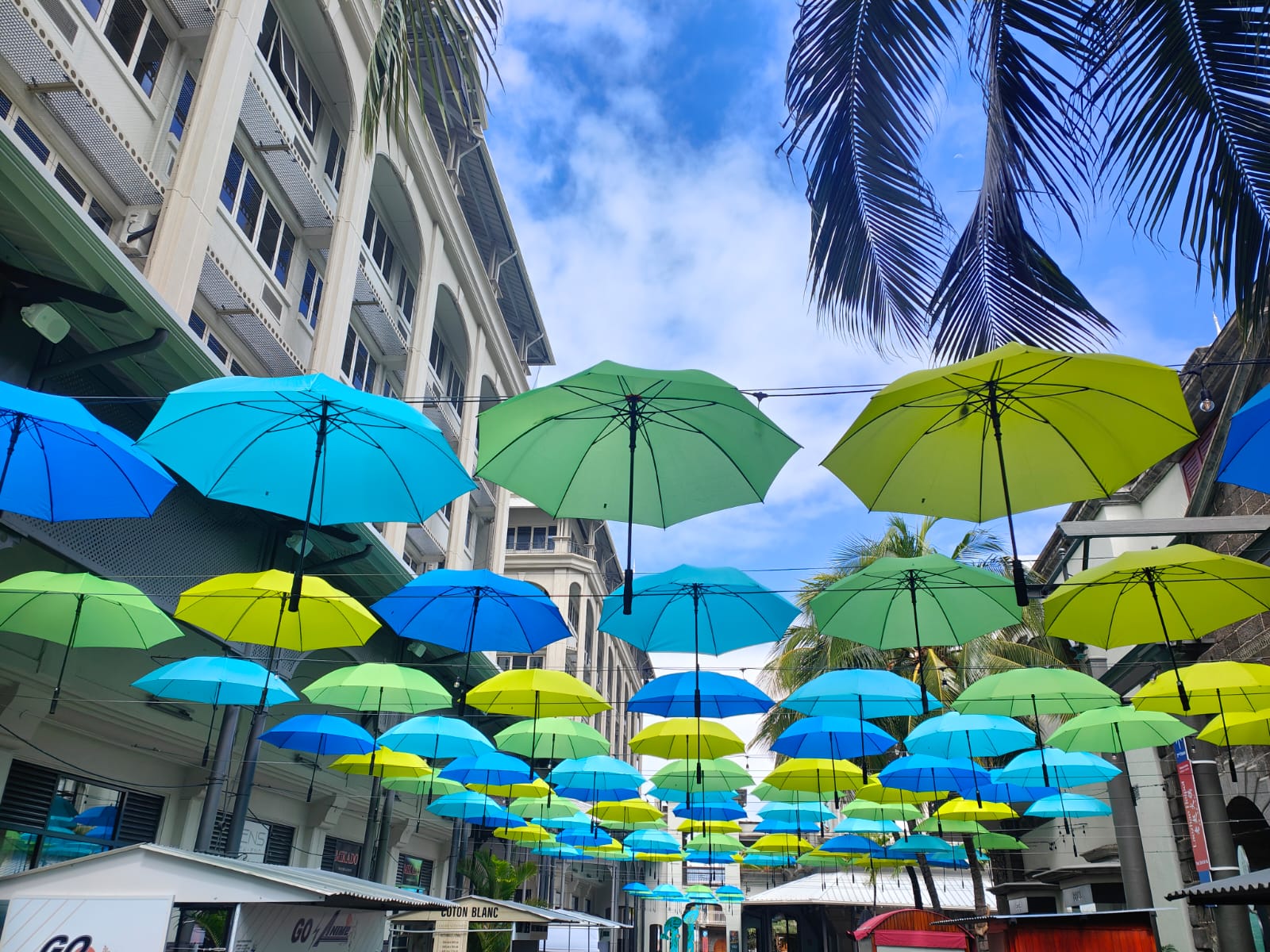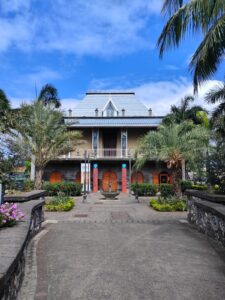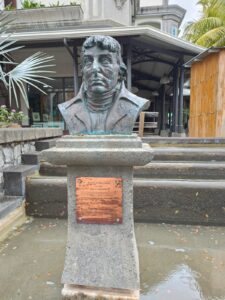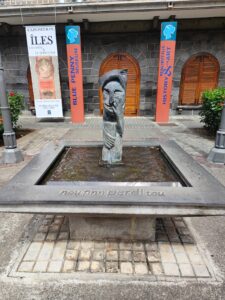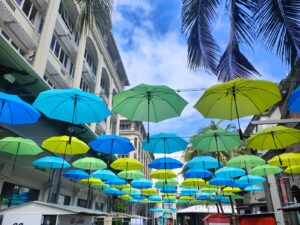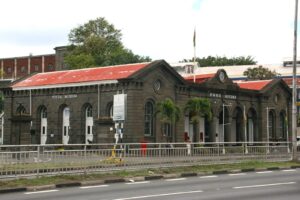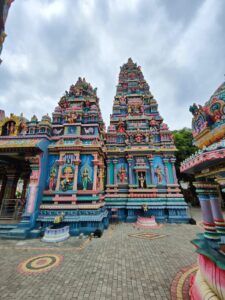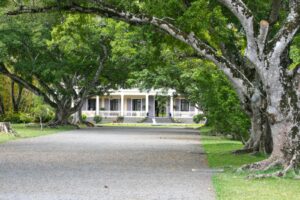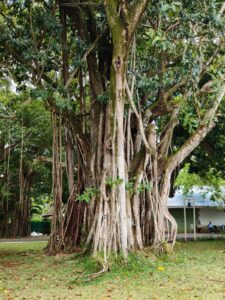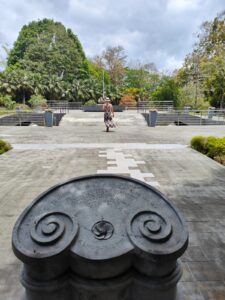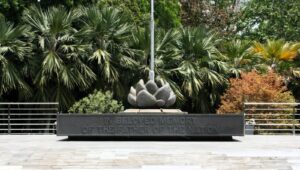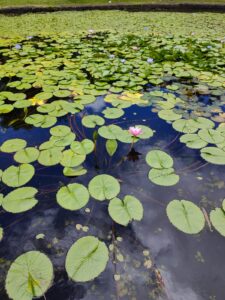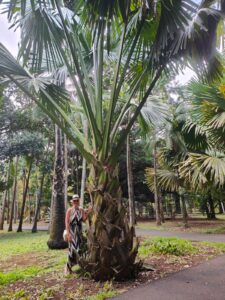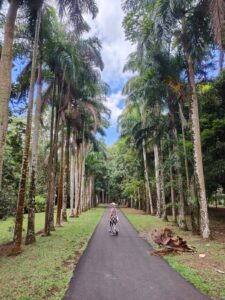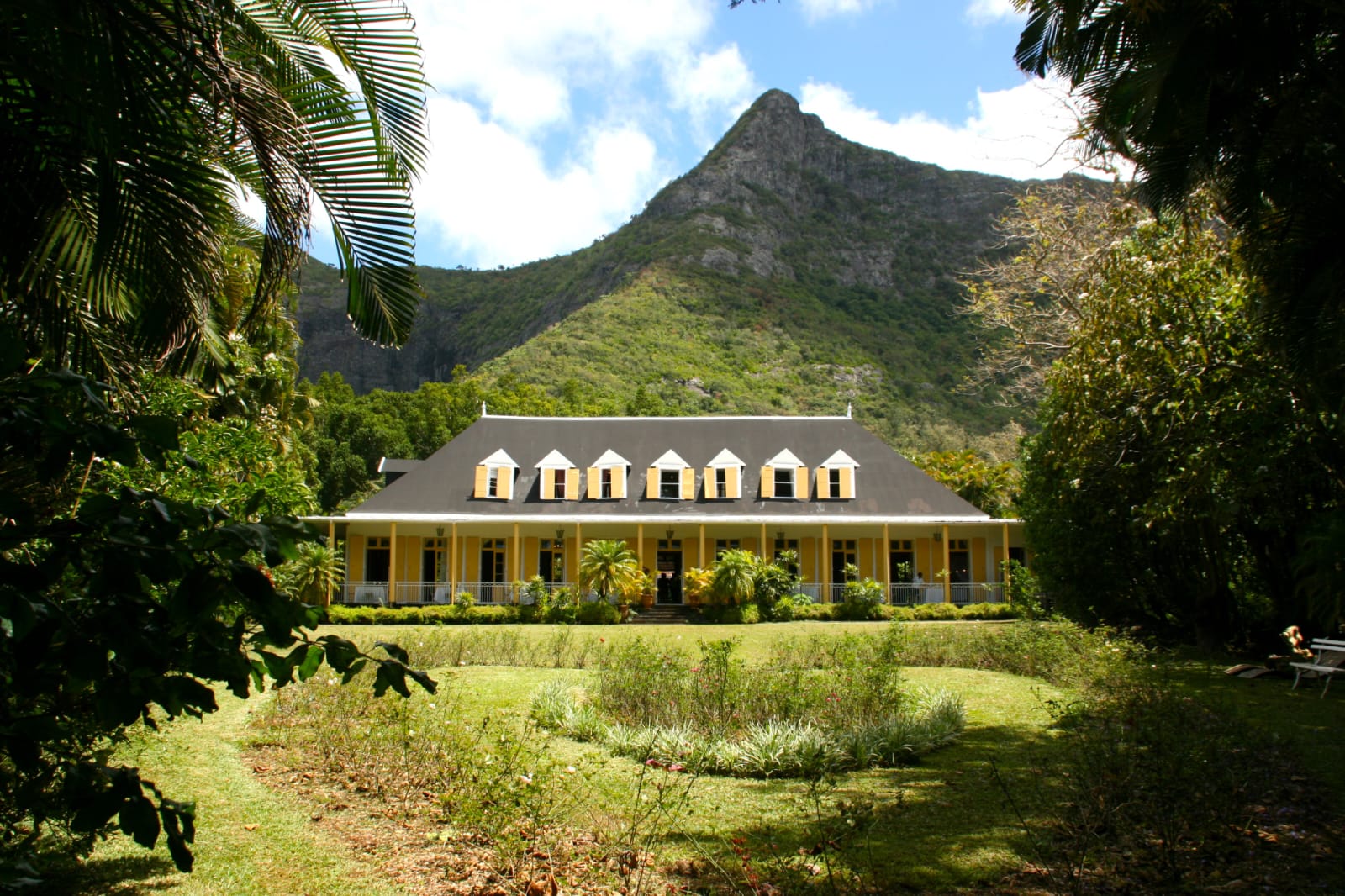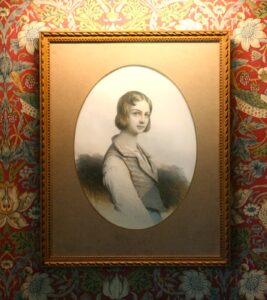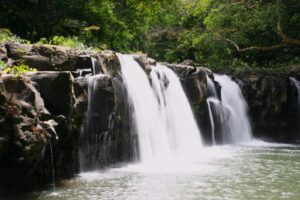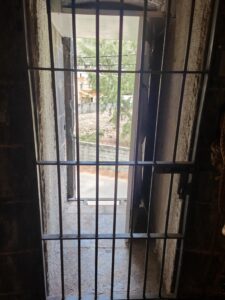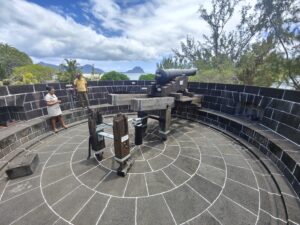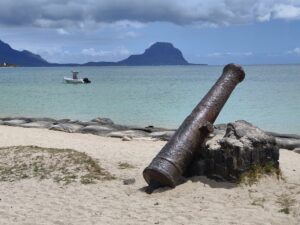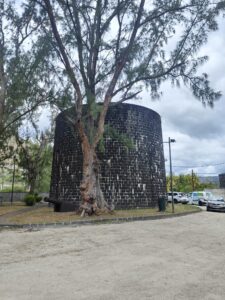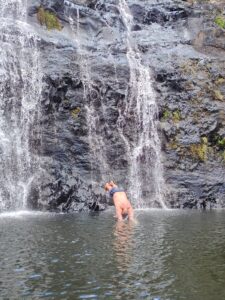The next stop on my meanderings around Florence is a visit to the Palazzo Vecchio which is located right in the middle of the city on the edge of Piazza Signoria. The piazza and palace are emblematic of the city. The Palazzo Vecchio has been the seat of the city’s power and strength throughout history. The palace’s cube shape design and outward appearance expresses power, strength & might in stark contrast to the stunning and detailed rooms that adorn the interior and exude class. The whole palace possesses an air of importance and an aura of historic fascination. Join me as I explore the Palazzo Vecchio and learn about the heart of the city with its civic emblem before finishing my visit with a climb of the Torre di Arnolfo, which gives beautiful views of the city skyline.
History of Palazzo Vecchio
Construction of Palazzo Vecchio started in 1299 when the people of Florence decided to build a palace worthy of the city’s importance, to provide a secure and defensible retreat, and to house the government organisations of the republic. Arnolfo di Cambio, who also built the church at Santa Croce, set about building the palace upon the ruins of Palazzo dei Fanti and Palazzo dell’Esecutore di Giustizia.
The government of Florence at the time constituted 8 elected priors who represented different trade guilds. The palace at this time was called Palazzo dei Priori (Palace of priors). In the next century the palace changed names as the form of government changed to become the Palazzo Della Signoria as it was then called after one man known as the Senior de Firenze.
The cubical building is made of solid rusticated stonework with two levels of windows high above the piazza. The crenelated battlements sit like a crown on top of the building and are supported by corbels (a structural piece of stone or wood that is weight bearing). The tower looks lonely as it stands above the structure below.
In 1540, Duke Cosimo I decided to show the power of the Medici by moving from the family palace into the Palazzo della Signoria. As a result Cosimo set about restructuring and decorating the palace into his family’s residence. The major remodelling and artwork was undertaken by Giorgio Visari, a name that cropped up on my visit to Santa Croce.
The Medici believed in beauty as a privileged means of communication. Walls and ceilings were decorated with stories of divinities, heroes and heroines of Greek mythology who fight for the freedom of their people. As a result, and I assume because of Cosimo’s position and title of duke, the palace changed names from its origins as Palazzo della Signoria to the Palazzo Ducale.
The new residential rooms were mainly used for Cosimo and his wife Eleonora of Toledo and their children. In 1549 Eleonora purchased Pitti Palace on the other side of the Arno River. My reading and research haven’t confirmed if Cosimo and Eleonora ever moved in officially into Pitti Palace. After purchasing what was a house, they started works on building it into a grand Ducale Palace. As my tour of Florence continues, I will learn about how the two palaces were connected by a secret passage. In this transitional period, Cosimo referred to and named the former Palazzo Ducale as Palazzo Vecchio, “the Old Palace” and maintained the Pitti Palace name.
The Medici family ruled Florence and Tuscany till 1737. After the Medici line ended, Florence and Tuscany passed into the hands of the Austrian crown. In 1861 decisions were made to join the united kingdom of Italy. In 1865 through to 1871 the ‘Old Palace’ gained new importance as the seat of united Italy’s provisional government as Florence was temporarily the capital of Italy. Palazzo Vecchio is now a museum but since its brief stint as home to the Italian government, it now houses the mayor of Florence.
Entrance and Courtyards of Palazzo Vecchio
The gateway to the Palazzo Vecchio is easily recognisable from holiday brochures on any visit to Florence. Replicas of Michelangelo’s gigantic ‘David’ and Bandinelli’s ‘Hercules’ stand at the steps leading to the palace and are likewise easily recognised. Behind them and closer to the entrance of the Palazzo Vecchio are two smaller statues, the two Herms, also by Bandinelli. Above the door is the 1528 frontispiece which is flanked by two gilded lions (known as the Marzocco Lion – the animal represents the free republic of Florence). In the centre is written “Rex Regum et Dominus Dominantium” which translates to “King of Kings and Lord of Lords”.
It is free to walk into the courtyards and if you don’t want to stump up the money to visit, the courtyard alone is worth the ‘free’ entry. The courtyard was designed by Michelozzo in 1453 and decorated by Vasari 1556. Cosimo I asked Vasari to make the space more spectacular for the wedding of his son Francesco I de’ Medici to Giovanna of Austria. Painted on the walls are cities of the Habsburg Empire.
The stucco work on the courtyard columns was entrusted to Pier Paolo Minoccio da Forlì. At the centre of the courtyard is a fountain designed by Vasari to replace the old well. The bronze statue is a replica statue of ‘Putto with dolphin’ by Andrea del Verrocchio. The original was built in 1470 and was placed on the fountain in1557. The original was removed and stored in the palace in in 1959.
Sala dei Cinquecento – The Hall of the five hundred
On the first floor is the largest and most important room in the palace. It is full to the brim of art with historic value. The room’s history began as a meeting place for the ‘Great Council’ before Giorgio Vasari was entrusted to dramatically and radically transform it.
When the Medici family were temporarily driven out of the city of Florence, shortly after the death of Lorenzo de’ Medici ‘The magnificent’, Girolamo Savonarola managed to rule over Florence. A lot will be learned about this man with a visit to San Marco in Florence (another time and another blog). Savonarola introduced a democratic government on the city known as the Council of Five Hundred. In setting up his new form of government and setting certain criteria, he found more than a thousand people were eligible. Therefore, it was decided to create a room allowing five hundred people to attend meetings and be involved in government decisions. This first room was built in 1494 by Simone del Pollaiuolo and Francesco Domenico and commissioned by Girolamo Savonarola.
Savonarola didn’t last too long, as he was arrested in 1498, hanged and burned at the stake in the Piazza della Signoria. Power was passed to Piero Soderini, who decided to decorate the room. He reached out to two of Florence’s greatest artists at the time, Leonardo da Vinci and Michelangelo Buonarroti to construct two murals celebrating victories of the republic (the battle of Anghiari and Cascina). Leonardo experimented, with disastrous effects, with an encaustic technique. Michelangelo was called to Rome by Pope Julius II meaning their works were never finished.
In the 1540’s when Duke Cosimo returned to power and moved the family home into the palace, he decided to transform the Salone dei Cinquecento into an audience room where he could greet people and receive ambassadors. He entrusted Giorgio Vasari with the renovations and designs. Vasari decided to raise the ceiling (by roughly 7m) to accentuate the grandeur of the hall and install a decorated, coffered ceiling to exalt and glorify the Medici family.
The coffered ceiling is made up of 42 individual panels with Duke Cosimo depicted in the centre. Vasari co-ordinated a team of painters which included Giovanni Stradano, Tommaso di Battista del Verrocchio, Ridolfo del Ghirlandaio and many others. The works started in 1542 and ended in 1571.
On the walls are six scenes of battles that represent the military success of Cosimo I against Pisa and Siena. On the eastern side, is the Conquest of Siena, the Conquest of Porto Ercole, and the Battle of Marciano. On the western side, the defeat of the Pisans at the tower of San Vincenzo, Maximilian of Austria attempting the conquest of Livorno, and Pisa attacked by the Florentine troops. Breathtaking in size and detail, this is art that I truly appreciate.
At the northern end of the hall is a raised area known as the Tribuna dell’Udienza. This raised area was designed to accommodate the throne of the duke. It was built by Giuliano di Baccio d’Agnolo and Bartolommeo Bandinelli. The architecture was inspired by a Roman triumphal arch to enhance the power of the sovereign. There are several statues of differing members of the Medici family.
Medici family rooms
After leaving the Salone dei Cinquecento one passes through several rooms on the first floor. Each room visited has been dedicated to a personality of the Medici family. The first room is dedicated to Cosimo de’ Medici called the Elder. He was the first powerful Medici, and set in place many building projects, most notably the dome of the Duomo. In his room the paintings depict moments of his life including ‘his return from exile’, and a painting with the architects Brunelleschi and Ghiberti showing Cosimo a model for the Basilica of San Lorenzo.
The next room is dedicated to his grandson, Lorenzo, called the Magnificent. His father (Piero) was a man of poor health, and it was Lorenzo who took on the legacy of his grandfather (Cosimo). A man of political acumen, this led to him holding a powerful sway over not only over Florence but Italy. This is displayed in the paintings as often Lorenzo is shown talking with philosophers and ambassadors. I found it interesting to notice a giraffe in one of the paintings, which supposedly was a gift from the visiting Sultan of Cairo.
The final room to visit on this floor is the room of Leo X, a pope. Giovanni de’ Medici was the son of Lorenzo the Magnificent and became a cardinal at the age of 13 before being elected to the papacy in 1513. He was the Medici’s first pope, and he laid much of the groundwork for the future Medici duchy of Tuscany. The paintings here show his triumphal return to Florence, and close inspection shows the David statue in one the paintings.
Second floor of Palazzo Vecchio
On the second floor are found the rooms of elements, the Ducal apartments, the apartments of Eleonora of Toledo (wife of Cosimo I), a small chapel decorated by Bronzino, Chancellery and the hall of Geographical maps.
When moving between the rooms on this floor, you get the chance to walk along a gallery which gives a spectacular view of the Sala dei Cinquecento. In the elements rooms you will find frescoes which include ‘The birth of Venus’, ‘Vulcan’s Forge’ and ‘Saturn receiving gifts of Earth’.
The tour then heads through the ducal apartments which includes the apartments of Eleonora. Eleonora and Cosimo had 11 children so required several bedrooms for them to sleep. The tour of the second-floor finishes in the chancellery and the hall of Geographical maps.
In the chancellery you will see a bust of Niccolo Machiavelli in painted stucco. You’ll remember that he had his tomb in the Basilica at Santa Croce. The hall of Geographical maps is a fascinating room full of maps of the known world. On the ceiling were meant to be the forty-eight celestial constellations.
Torre d’Arnolfo
The unmistakable tower, 95m in height was named after the original architect Arnolfo di Cambio. The tower was part of the city’s defence system as it provided a view over the city and surrounding area. The view over the city was particularly important as the government was able to monitor the heights of Florentine houses, ensuring that they didn’t exceed a permitted height.
When looking at the palace from the piazza, you will notice that the tower is not in a central location. Arnolfo used the former Foraboschi family tower as the substructure to build the tower seen today.
At the top of the tower, you will find a prison cell where both Cosimo de’ Medici (in 1435), and Girolamo Savonarola (in 1498) were imprisoned. The latter was taken from this cell and executed in the piazza below. The one-handed clock in the tower was originally constructed in 1353 by Nicolo Bernarado before being replaced in 1667 with a replica installed by Vincenzo Viviani and made by Georg Lederle from Augsburg.
In Conclusion
A visit to Palazzo Vecchio has been an enjoyable and thoroughly educational visit. Knowledge has been gathered about the history of the city and the forms of government that ruled over the city at differing points throughout history. It also provided an insight into the famous family of Florence, the Medicis.
The visit built on the first learnings made to Santa Croce as two names that have links to both, seems to have started a theme. Arnolfo di Cambio is a name that perhaps is not associated with Florence or history itself but it is becoming apparent that he was the founding father of the city’s iconic architecture. The other name, Giorgio Vasari, it would appear, has probably left as much of an influence on the city as the so-called famous artists of Florence.
Before exploring Florence, I had watched the Medici TV series. This had limited my knowledge to only the first half of the Medici family (the Elder). My visit here opened my eyes to the second half of the Medici family (the grand dukes) and showed the legacy that they created and the results it left behind.
Throughout all this education, it was interesting to find out about the brief interruption in Medici rule which has now inspired a visit to Basilica San Marco to learn about Girolamo Savonarola along with visits to the Church of San Lorenzo (Medici church and tombs) and Medici Palace Riccardi.
My next stop though is to visit Cosimo’s and Eleonora new home (Pitti Palace) after their short stay here in Vecchio Palace.



